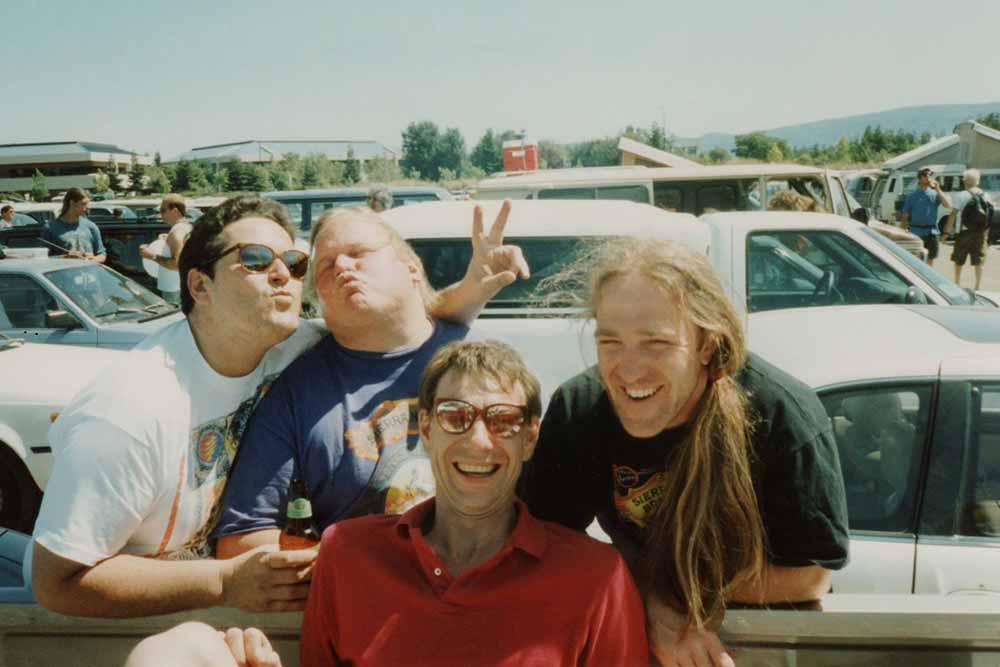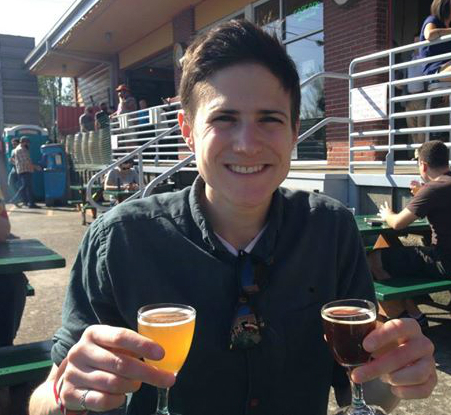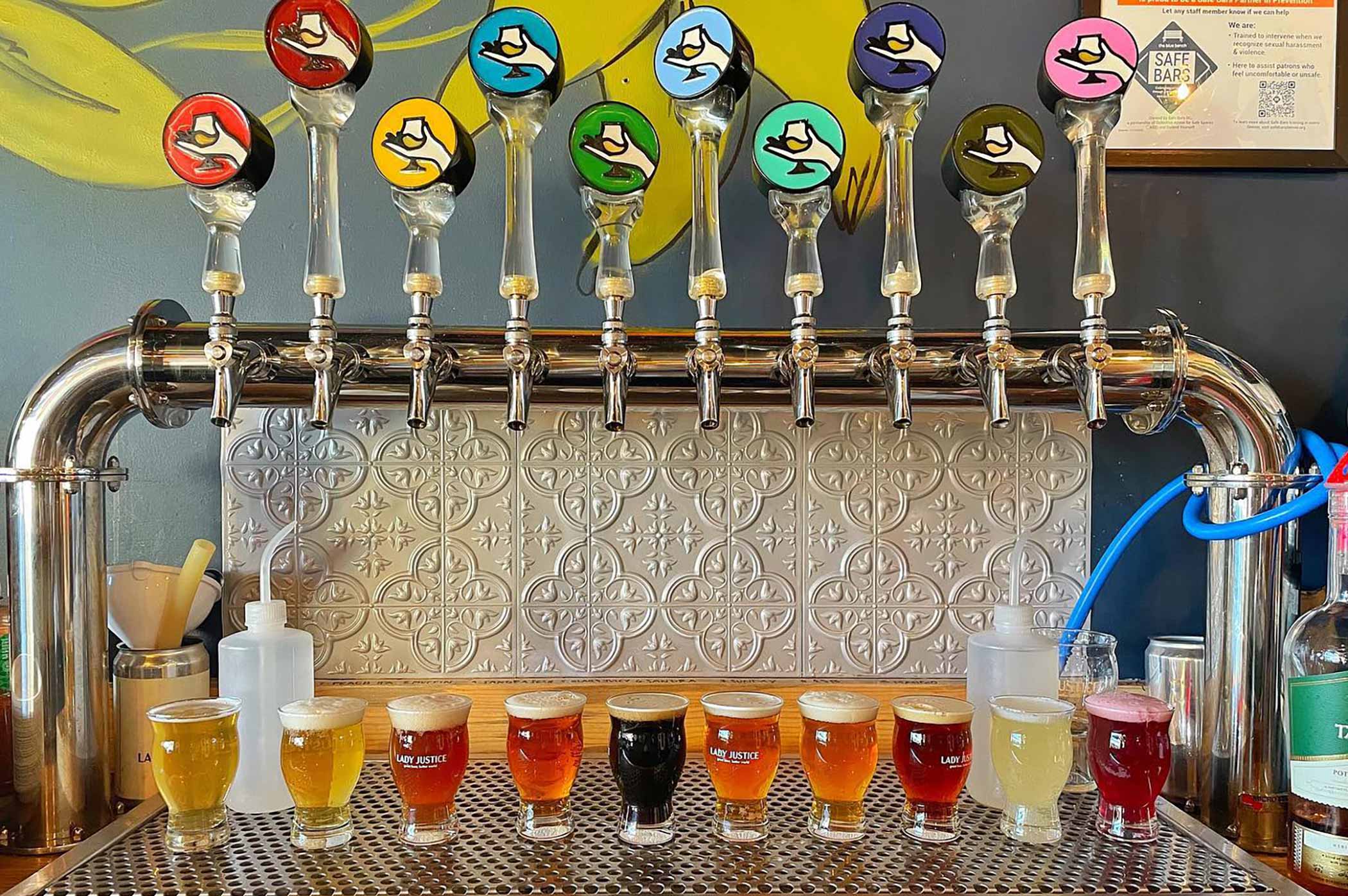Shop
A Liquid Legend: The Story of How Sierra Nevada Pale Ale Stays Timeless After Four Decades
A legendary beer of the past, present, and future.
Read More About Sierra Nevada
Sierra Nevada Celebration Ale: A Celebration of the Freshest Hops for the Holidays
Cannonball Into Sierra Nevada’s Seasonal Session Hazy, Summer Break
We Tried Sierra Nevada’s Hazy Little Thing
This is a paid, sponsored post presented by our friends at Sierra Nevada.
In 1984, the parking lot of the Oakland Coliseum resembled the Wild Wild West. Thousands of Deadheads congregated before a Grateful Dead concert. On what became known as Shakedown Street, people set up tables selling t-shirts and jewelry. Some made grilled cheese sandwiches and hawked burritos on the spot. Others sported wide-open ice chests packed with beer—mainly imports but also one yet-to-be-iconic beer called Sierra Nevada Pale Ale.
Among the music lovers, mainstream disruptors, and underground drinkers, current Sierra Nevada Product Manager (and self-proclaimed Deadhead) Terence Sullivan tasted his first Pale Ale.
“I remember a friend of mine told me he tried this beer last night—Sierra Nevada Pale Ale from Northern California up in Chico—we have to go look for it,” says Sullivan. “We set out, and within a couple of ice chests down Shakedown Street, we ran into a vendor selling ‘em for two bucks a pop.”
Sullivan called his first sip of now one of the most revered beers in American craft beer history “eye opening.”
He recalled, “Wow, what is this!?”
Unlike all the imports and domestic lagers he usually drank, Sierra Nevada Pale Ale hit completely new chords. “It has a lot of piney notes, fruit citrus notes, and grapefruit. I even get a little bit of fresh apple from the bottle conditioning and fermentation,” says Sullivan, who says he never missed a Grateful Dead show in Northern California (we imagine he drank quite a few Pale Ales). “It’s just one of those beers when you have it—like trying your first Orval, Saison Dupont, or Allagash White—wow, holy moly!”
So how did Sierra Nevada end up being the favorite beer of Deadheads and, later on, other musicians? And how does one of the most epochal beers on the planet “still turns heads,” as Sullivan says?
Sierra Nevada Co-Founder Ken Grossman didn’t necessarily open a brewery to set the world on fire. He just wanted to make beer that Americans had never tasted before. Well, now that we spell it out, that sounds pretty revolutionary.
Kind of like how the Grateful Dead started simply as an electric band playing as the Warlocks in Magoo’s Pizza Parlor in Menlo Park, CA.
Eventually, their psychedelic music morphed the minds of entire generations. Just as Pale Ale rocked taste buds, forever changing the trajectory of American craft beer.
While the origin story of Pale Ale might not be an utterly mind-bending acid trip, it’s undoubtedly one of those radical moments in time that we now call legendary.
Sierra Nevada Pale Ale Rebels Against American Light Lagers
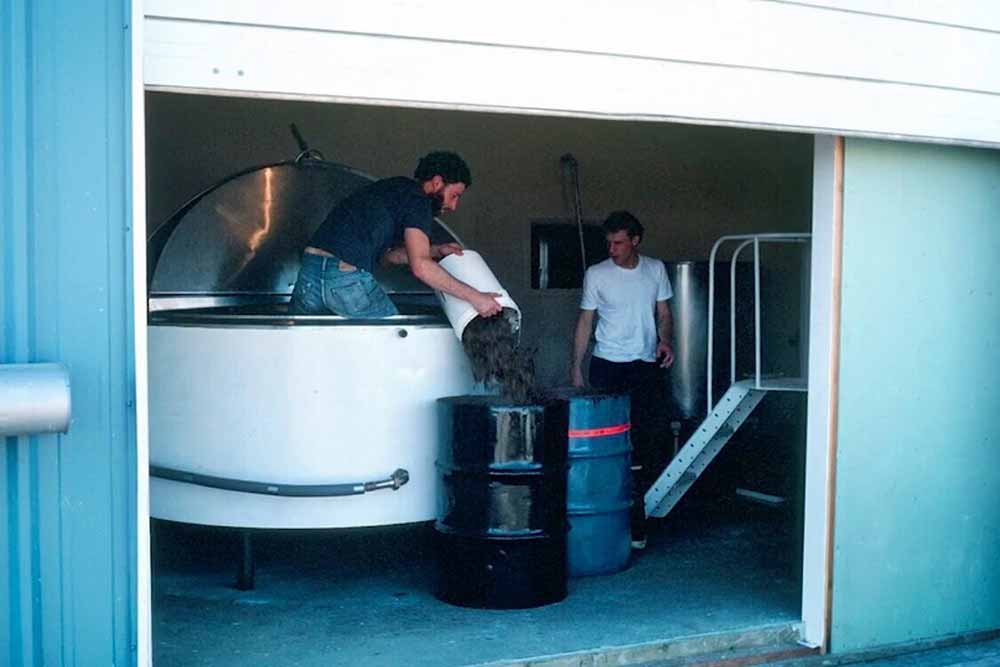
Sierra Nevada Brewing Company Founder Ken Grossman in the early days of the brewery | Photography courtesy of Sierra Nevada Brewing Company
To understand how Sierra Nevada Pale Ale shook up the entire industry, you must realize how different the beer landscape looked fifty-plus years ago.
In America’s late 1970s and early ‘80s, light lagers dominated. “For the most part, the whole U.S. brewing industry made one style of beer,” says Grossman. “Light lagers.”
But a counterculture of underground homebrewers started growing, brewing against the current.
Grossman and several other Northern California homebrewers rose from the rubble of fizzy, bland beers.
Starting to homebrew in 1969, Grossman opened up a homebrew supply store in 1976 before incorporating Sierra Nevada Brewing Co in 1978 and releasing its first beer in 1980.
During that time between 1977-1981, Grossman recalls six breweries opening in Northern California, five of whom were homebrewers. Suppose you know only a bit of craft beer history. In that case, you may recognize some names—New Albion Brewing Company, often recognized as the first post-Prohibition microbrewery in the U.S., or DeBakker Brewing.
Of all those OG breweries, only Sierra Nevada still exists.
And Sierra Nevada Pale Ale has a little something to do with that.
Sierra Nevada Pale Ale: The Second Commercial Beer Brewed
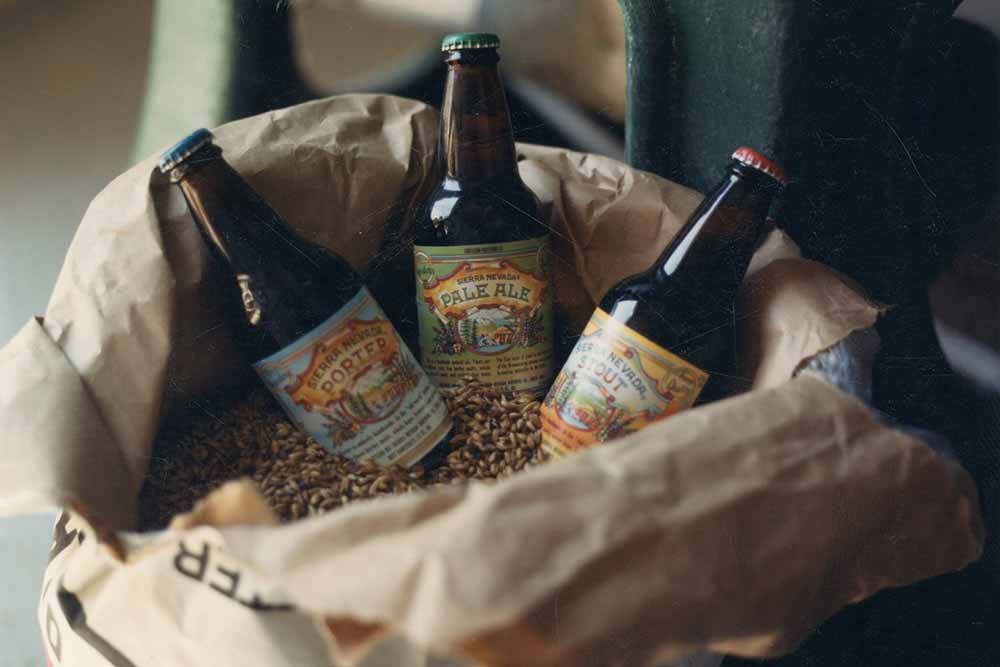
Photography courtesy of Sierra Nevada Brewing Company
While many may think Grossman opened Sierra Nevada with his Pale Ale, he actually brewed five barrels of stout first.
And he strategically planned things that way.
Unsurprising for a guy who built the brewery with his own hands, literally welding old dairy equipment together to create fermentation tanks.
Brewing a strong malt stout first “allowed us to hide some of our sins from the very first batch of beer,” says Grossman. “And it allowed us to break in the equipment and understand how to make beer scaled from 5-gallon batches to 300-gallon batches.”
After all, the recipe for Sierra Nevada Pale Ale didn’t appear out of thin air. Grossman spent years cycling through various homebrew renditions, tweaking the hops, trying different water treatments, experimenting with yeast strains (many of which he collected himself), and testing bottle conditioning.
To scale up, Grossman says he dumped roughly the first ten commercial batches of Sierra Nevada Pale Ale because they couldn’t nail the consistency from batch to batch.
“We realized, in the end, we weren’t oxygenating the wort quite enough, and the yeast was struggling with fermentation,” he says. “Once we resolved that, we were off and running with Pale Ale as the flagship.”
Although, admittedly, Grossman says the release out of the gate was less a sprint and more like a light jog. It would be another ten years before the beer really ran.
Why?
Because the then-bracingly bitter Pale Ale was unlike anything anyone had ever tasted.
Courtesy of one hop that very few people had heard of at the time: Cascade.
A Core of Cascade Hops
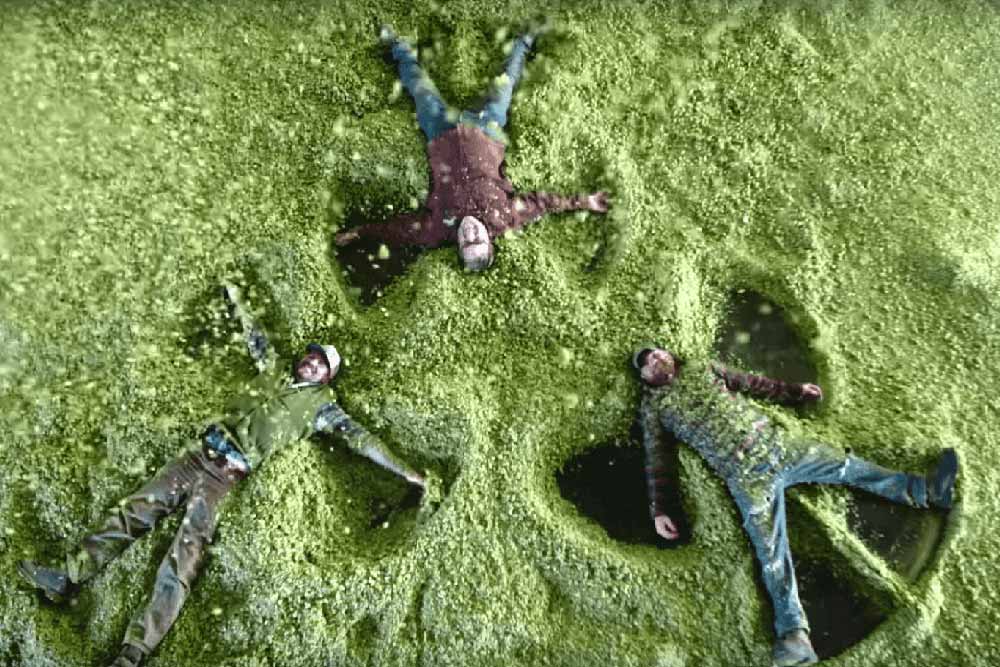
Photography courtesy of Sierra Nevada Brewing Company
When Grossman first started homebrewing in 1969, he says eighty percent of the hops available in the U.S. were Cluster. Some “fringe” varieties available included Bullion, Northern Brewer, Brewers Gold, Fuggle, Willamette, and eventually Cascade.
The first commercial crop of Cascade came out in 1968 in Oregon. But major breweries avoided the hop because they mostly used the distinctly different European Noble varieties, such as Hallertau and Saaz.
Instead, homebrewers who could get their hands on some began playing around with Cascade.
Those like Grossman.
He discovered Cascade at The Home Wine Shop in Southern California, whose owner had connections with Yakima hop growers, selling the tiny shop two-ounce to four-ounce white ice cream bags of whole-cone Cascade hops.
When Grossman opened up his own homebrew supply shop in the late ‘70s, he drove up to Yakima and bought Cascade hops directly from the growers.
“Cascade was the only one that was a somewhat refined aroma hop,” says Grossman, noting all the other hops available at the time were primarily for bittering. “Although today’s craft industry uses them, some of those varieties were thrown out because they were too strong-smelling back in the ‘70s.”
But for Grossman, the stronger, the better.
In Sierra Nevada Pale Ale, Grossman throws Cascade in as the first addition in the kettle through to the last addition in the hop strainer. Used as both a bittering and aroma hop, Cascade gives distinct characteristics to Pale Ale.
Namely lots of pine and citrus.
Which came from the relatively high oil content. According to Grossman, a pound of Cascade at 1.5-2% oil produces a much more intense aroma profile than a pound of Hallertau or Saaz at .5% oil. “The impact of quantity but also terpenes and aromatic compounds in Cascade have their own unique signature and are much different from what you found back then in the classic aroma hops,” says Grossman.
Remember what Sullivan said when he tried his first Pale Ale?
“Wow, holy moly!”
Those pine, grapefruit, and orange notes punched him in the mouth harder than a Grateful Dead drum solo.
At the time, clocking in at 38 IBUS, Pale Ale far out-paced anything else on the market in bitterness.
This beer was a banger.
But like any mainstream-breaking icon or culture-shifting symbol…the beer didn’t start that way.
Marching to the Beat of Your Own Drum
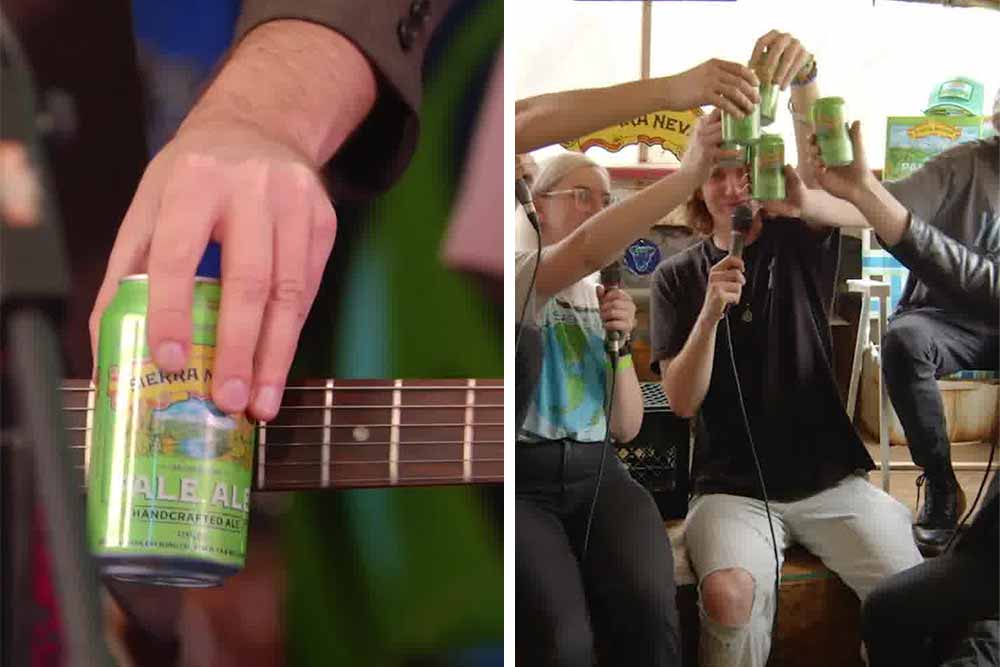
Photography courtesy of Sierra Nevada Brewing Company
“Our Pale Ale was a shock to most people’s systems,” says Grossman.
As the beer hit the market and Grossman started sampling it at tastings and music festivals, he says, “Ten percent of people loved it, and ninety percent turned their nose up because it was too strong, too bitter, and too aromatic. It took people a while to warm up to hoppy beers.”
Ten to fifteen years, in fact, according to Grossman.
Hey, history-breaking beers don’t get that way overnight.
But as people’s palates started to shift and, most importantly, Grossman and Sierra Nevada stuck to their principles, the tune people sang began to change.
Literally.
In the late ’80s to early ‘90s, Grossman noticed Bay Area distributors would run dry of Pale Ale at certain times during the year.
Sullivan says they finally figured out that these coincided with Grateful Dead concerts with three-, five-, or even seven-night runs. “A lot of Deadheads back in those days, because they couldn’t easily get [Pale Ale] on the East Coast and throughout the tour, bought cases of it and took it with them as they drove across the country, selling it in parking lots,” says Sullivan, noting that’s how Deadheads often paid for fuel, food, and lodging costs. “We still contribute a lot of our early successes on word of mouth but also that scene of Deadheads; they’re pretty loyal to their band, they travel well, and that’s how our beer spread in the early days via parking lots of concerts.”
Sullivan would know; he’s been to 238 Grateful Dead concerts in his lifetime. The band played upwards of twenty-five shows in Northern California a year. “I wouldn’t miss a single one,” he says. “You had to go … because you never knew which one was the one that would blow your mind.”
Growing up with a father who worked in radio, Sullivan says music constantly played in his childhood home in Shreveport, LA.
“When I got up in the morning and had my cereal, my dad’s radio station was on in the kitchen.”
When his family moved to Northern California, Sullivan and his older brother discovered the Grateful Dead.
As Sullivan grew, so did his love of the Grateful Dead. He even stuck around the Bay Area after high school partially because he didn’t want to miss a Grateful Dead show.
Maybe that was fortuitous.
“My dad and brother brought me to the Grateful Dead, and the Grateful Dead brought me to Sierra Nevada Pale Ale,” he laughs. “I’m tearing up now thinking about how many emotional experiences I’ve had with live music. Nothing compares to it—music and beer go together.”
In the early days, it was a testament to Pale Ale that they drank the same Pale Ale no matter what parking lot a Deadhead visited.
And today, “no matter where you go in the country, you’re going to get Pale Ale that’s fresh, tastes great, and tastes the same way if you get it at a liquor store in Northern California or New York,” says Sullivan.
Because the key to Sierra Nevada Pale Ale’s longevity is its consistency and quality.
Why Is Sierra Nevada Pale Ale Still So Iconic
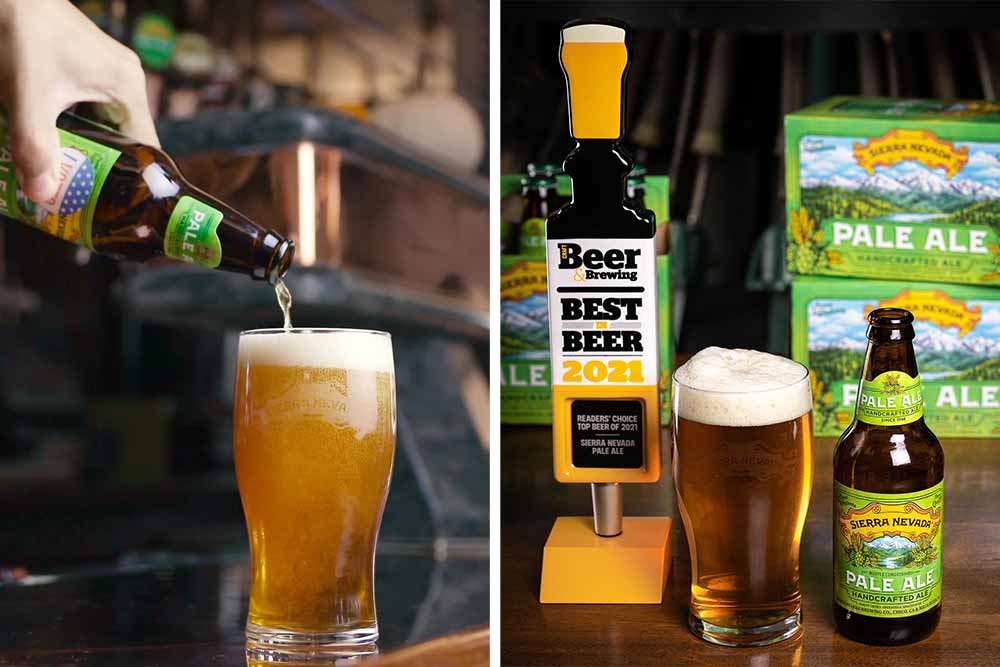
Photography courtesy of Sierra Nevada Brewing Company
“We try to make Pale Ale taste the same as it did forty years ago,” says Grossman.
Even when Grossman only made a few thousand barrels worth of beer (for comparison, in 2021, Sierra Nevada produced 1.1 million barrels, making them the third-largest craft brewery by volume), he still built a sensory lab, testing and finding ways to improve the quality of the beer.
“Without question, we’re going to get the finest ingredients and equipment,” says Sullivan. “It says something when your beer can sit ninety days on a cold shelf and still taste just as good as it did the first week.”
Sierra Nevada puts unparalleled care and attention into brewing Pale Ale. “A lot goes into our Pale Ale that a modern craft brewer starting today would not design or build beers around,” says Grossman.
For instance, using whole-cone Cascade hops, which is “foreign to ninety-nine percent of America’s small and big breweries,” says Grossman. “It’s more costly and labor intensive and takes up more space … but it helps impart character that makes our Pale Ale so great.”
In fact, Sullivan says that Sierra Nevada is currently the largest consumer of whole-cone Cascade hops.
But beyond the recipe, both Sullivan and Grossman mention bottle conditioning as a defining factor.
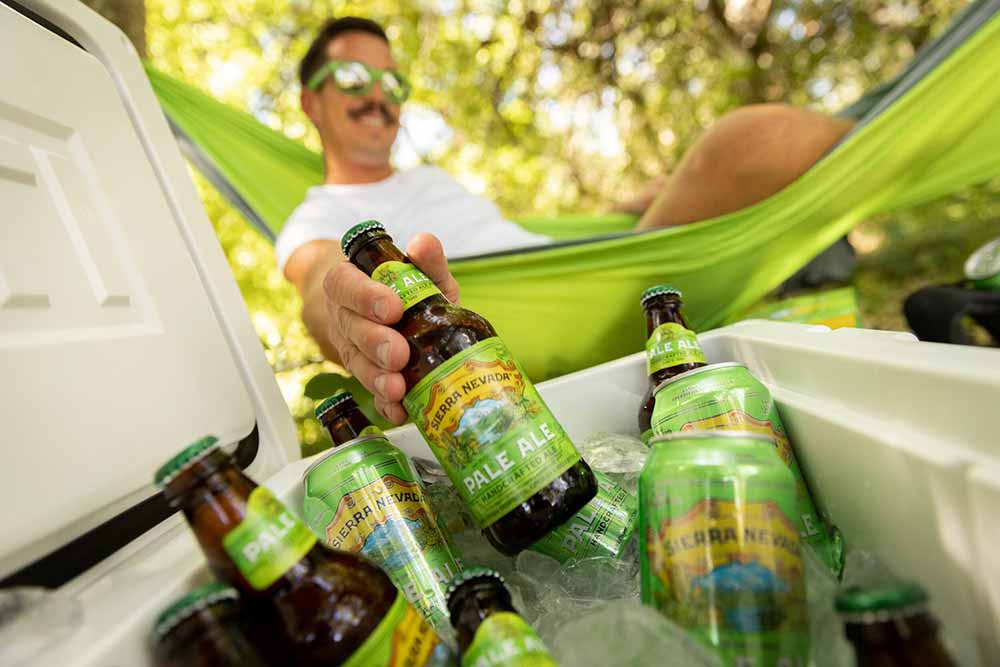
Photography courtesy of Sierra Nevada Brewing Company
Each Pale Ale conditions in the bottle or can, spending an additional couple of weeks aging in a warehouse under temperature-controlled conditions.
“No brewery in the world would start right now and go, ‘Let’s bottle condition our beers,’” says Sullivan. “It’s terribly expensive … [and] an absolute pain in the butt … but the flavor is so different if you don’t.”
So while bottle conditioning costs more money and time, the practice partly defines Pale Ale.
“The fact the beer has stood the test of time with the way we make it and continue to make it is a testament to its stature as one of the early pioneering beers that kicked off the whole craft beer revolution,” says Grossman.
But Grossman didn’t mention something here—a magical, intangible thing that you can’t quite put your finger on or quantify.
“Love goes into every single batch,” says Sullivan. “I hear … from a lot of people that [Pale Ale] brings back really cool memories.”
Cracking open a can of Pale Ale or popping the top off a bottle sparks the unexpected, a feeling that anything is possible or, as Sullivan says, “What’s the next memory going to be?”
Whether you’re picnicking on the beach, hanging out in a bar with friends, or gathering in the corner of a dusty parking lot before a concert, Pale Ale has lived through all these moments and will keep doing so for decades.
After all, there is a reason why people in the past, present, and future will continue to reach for a Pale Ale, whether they’re new drinkers, seasoned brewers, or even a Grateful Dead lead guitarist.
Music Legend Loves Legendary Sierra Nevada Pale Ale
While Sullivan drank his first Pale Ale in the mid-’80s on Shakedown Street before a Grateful Dead concert, the beer remains one of his favorites today.
But he’s not the only one who loves this beer.
Legend has it that a particular musician enjoyed Pale Ale, too.
When Sullivan started working at Sierra Nevada in 1994, a year before Grateful Dead lead guitarist Jerry Garcia passed away, he still had quite a few friends who worked for the band in ticket sales. That winter, one of his friends approached him about supplying the band’s Christmas party with a keg of Pale Ale. “My friend Tom didn’t drink, but he told me that he sat down with Jerry [Garcia] while he had a glass of Pale Ale, telling him that my friend works for this company and is a brewer now,” says Sullivan with a small smile. According to Sullivan’s friend, Garcia responded, “Ah, I really like it.”

